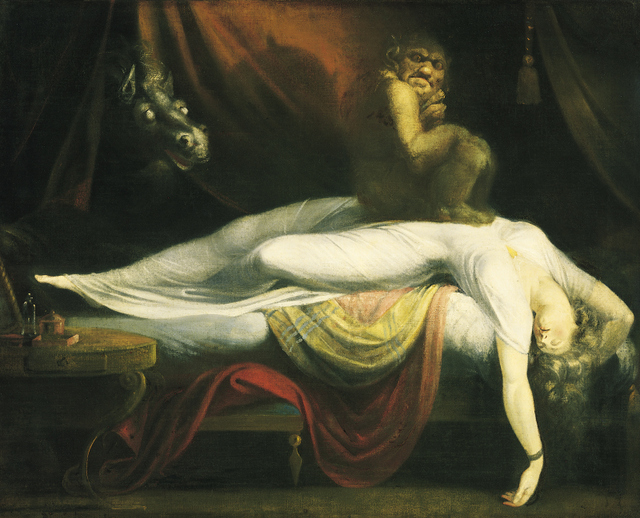I gave a talk today to a class of writing students about dreams in art. To be more precise, art that is either derived from dreams, such as Surrealism, or which has features in common with dreams as we experience them in our own lives or in writing. I talked about my own work, which uses dreams and relies on the unconscious as a working process. And then I projected some images for discussion. It was a good, engaged group of people. Here are some of the things we talked about:
The Egyptian god Anubis. Transformations from animal into human and vice versa are a common feature of dreams.
Australian artist Jean Burke, for its abstract qualities and its relation to the aboriginal state of Dreamtime.
A detail of Bosch's Garden of Earthly Delights, because religious visions often look like nightmares.
A painting and a print by Goya. Nuff said.
Fuseli's "The Nightmare." Funny how animals and monsters recur in art related to dreams, well before the Age of Freud.
De Chirico. Like that dream where you walk into a space that seems perfectly real and possible, but which doesn't seem quite right.
Andre Masson, an automatic drawing.
Magritte, for the occurrence of things in places where they shouldn't be, just as in, you know, dreams.
Dali, Surrealist dream maker par excellence.
Picasso's Blind Minotaur Being Led by a Girl. Created when Pabs was influenced by Surrealist ideas about the unconscious. A print I've spoken about several times on this blog, and one of the things that inspired me to take up printmaking.
Thanks to Tom Popp (himself a fine writer and some-time visual artist) for inviting me into his Dreams class.










